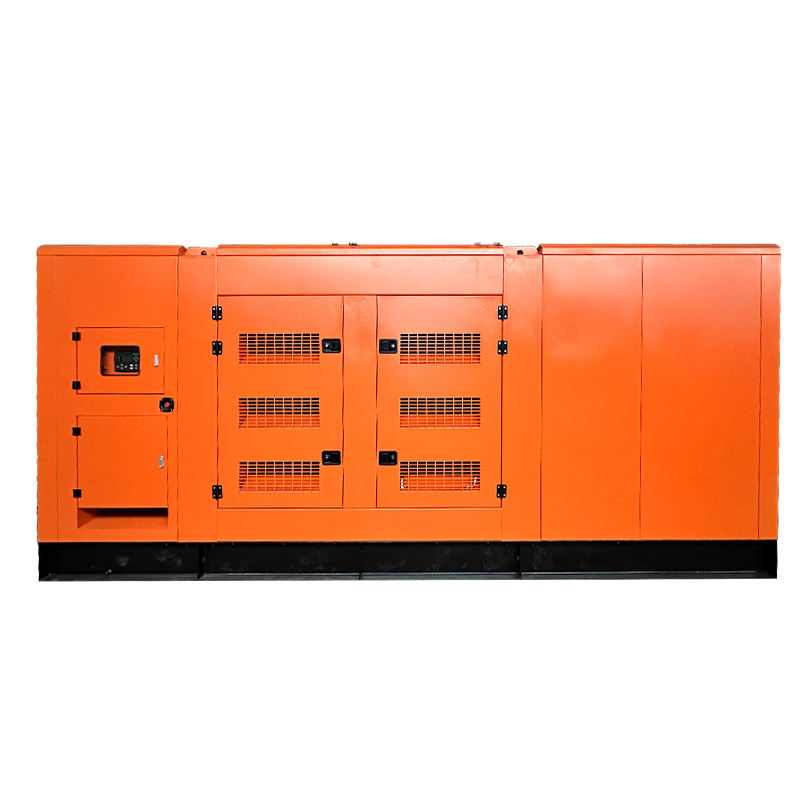Generator vs. Generator Set: Key Differences & Applications Explained

When discussing power generation, the terms "generator" and "generator set" (or "genset") are frequently encountered. While they're related, they're not interchangeable. This article clarifies the crucial distinctions, explores their components, outlines various applications, and provides guidance on selecting the right power solution for your needs.
What is a Generator?
A generator is a machine that converts mechanical energy into electrical energy. This conversion is based on Faraday's Law of Electromagnetic Induction: a changing magnetic field induces a voltage in a conductor.
Think of a generator as the electricity-producing component. It doesn't create energy from nothing; it transforms it.
Key Components of a Standalone Generator:
- Rotor: The rotating part, often containing magnets (permanent or electromagnets). Its rotation creates the changing magnetic field.
- Stator: The stationary part, consisting of coils of wire. The voltage is induced in these windings.
- Brushes and Slip Rings (or Commutator): These (in some designs) transfer current from the rotating rotor to the external circuit. Modern brushless generators use electronics for this, enhancing reliability.
Important Note: A standalone generator cannot produce electricity on its own. It requires an external source of mechanical energy to rotate the rotor.
What is a Generator Set (Genset)?
A generator set (or genset) is a complete power generation system. It combines a generator with an engine (and other essential parts) to create a self-contained unit that generates electricity. The engine provides the mechanical power to drive the generator.
Key Components of a Generator Set:
- Engine: The heart of the genset. It converts fuel (gasoline, diesel, propane, natural gas) into mechanical energy (rotation). Engine types include:
- Diesel Engines: Durable, fuel-efficient, long lifespan. Ideal for industrial and large standby use.
- Gasoline Engines: Less expensive, but less fuel-efficient. Common in portable generators.
- Natural Gas/Propane Engines: Cleaner burning, can connect to existing gas lines.
- Dual-Fuel and Tri-Fuel Engines: Offer fuel flexibility.
- Generator (Alternator): Converts the engine's mechanical energy into AC electrical energy.
- Fuel System: Tank, lines, pump, and filter. Determines runtime.
- Voltage Regulator: Maintains a stable output voltage, protecting sensitive electronics.
- Cooling System: Prevents overheating (air-cooled or liquid-cooled).
- Exhaust System: Vents exhaust gases safely.
- Lubrication System: Keeps engine parts lubricated.
- Battery and Charger: Starts the engine and keeps the battery charged.
- Control Panel: Provides controls and monitoring (voltage, frequency, oil pressure, etc.).
- Frame/Enclosure: Provides housing and mounting. Can be open or enclosed (weatherproof).
- Automatic Transfer Switch (ATS) - For Standby Use: Automatically switches the load between utility power and the generator.
Key Differences: A Comparison Table
| Feature | Generator | Generator Set (Genset) |
|---|---|---|
| Function | Converts mechanical to electrical energy | Complete, self-contained power system |
| Components | Rotor, stator, brushes/slip rings (or equivalent) | Engine, generator (alternator), fuel system, voltage regulator, cooling system, exhaust system, lubrication system, battery, control panel, frame/enclosure, (optional) ATS |
| Power Source | Requires external mechanical energy | Includes its own engine |
| Standalone Use | Cannot produce electricity alone | Can produce electricity independently |
| Typical Use | Component within a system | Standby power, prime power, portable power |
Applications of Generators and Generator Sets
Generators (as components):
- Within Generator Sets (most common)
- Wind Turbines
- Hydroelectric Dams
- Steam Turbines (Power Plants)
- Automotive Alternators
Generator Sets (Gensets):
- Standby Power (Emergency Power): Homes, hospitals, data centers, businesses.
- Prime Power: Remote locations, construction sites, mining operations.
- Portable Power: Camping, outdoor events, construction.
- Industrial Power: Standby and prime power, peak shaving.
- Marine Generators: Ships and boats.
- RV Generators: Recreational vehicles.
Choosing the Right Generator Set: Key Considerations
Selecting the right genset involves careful consideration of several factors:
- Power Requirements (kW or kVA):
- Calculate your total load (running wattage and starting wattage).
- Choose a genset with higher capacity than your calculated load (at least 20% headroom).
- Fuel Type:
- Diesel: Durable, fuel-efficient, but more expensive.
- Gasoline: Less expensive, readily available, but less fuel-efficient.
- Natural Gas/Propane: Clean-burning, convenient, but may need professional installation.
- Dual/Tri-Fuel: Flexibility.
- Voltage and Phase:
- Match voltage to your devices (e.g., 120V, 240V).
- Single-phase for residential, three-phase for industrial/commercial.
- Portability:
- Portable generators: Smaller, lighter, with wheels.
- Standby/Industrial: Larger, heavier, permanently installed.
- Noise Level:
- Consider decibel (dB) ratings, especially in residential areas. Enclosed gensets are quieter.
- Run Time:
- How long can it run on a tank of fuel (or gas connection)?
- Automatic Transfer Switch (ATS):
- Essential for seamless standby power.
- Emissions Regulations:
- Check federal, state, and local regulations.
- Maintenance:
- Regular maintenance is required (oil changes, filter replacements, etc.).
- Budget:
- Consider the initial cost, fuel costs, and maintenance costs.
Conclusion
Understanding the difference between a "generator" and a "generator set" is crucial for making informed decisions about power generation. A generator is a component that converts mechanical energy to electricity, while a generator set is a complete system that includes an engine to provide that mechanical energy. By considering your power needs and the factors discussed, you can select the right generator set for your specific application, ensuring reliable power when and where you need it.





